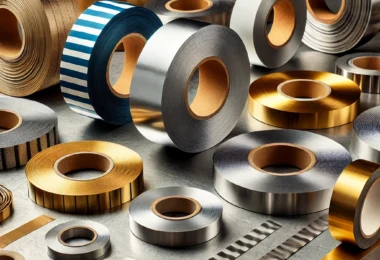In the world of industrial machinery and processes, vacuum technology plays a pivotal role in a wide range of applications. From food packaging and pharmaceutical manufacturing to semiconductor production and chemical processing, the need for efficient and reliable vacuum systems is paramount. One technology that has been making waves in the vacuum industry is the Screw Vacuum Pump. In this blog, we will explore the fascinating world of Screw Vacuum Pumps, their working principles, advantages, and the diverse applications where they are making a significant impact.
Chapter 1: The Basics of Screw Vacuum Pumps
1.1 What is a Screw Vacuum Pump?
A Screw Vacuum Pump is a type of positive displacement vacuum pump that operates on the principle of twin intermeshing screw rotors. These screws rotate in opposite directions to create a vacuum by trapping and compressing gas as it moves through the pump.
1.2 How Does a Screw Vacuum Pump Work?
The operation of a Screw Vacuum Pump can be broken down into several key steps:
Gas Intake: Gas is drawn into the pump as the screws rotate, creating an expanding chamber.
Compression: As the screws continue to turn, the gas is compressed between the screw lobes, reducing its volume.
Exhaust: The compressed gas is expelled from the pump, creating a vacuum within the pump chamber.
Repetition: The process is continuously repeated, creating a continuous vacuum.
Chapter 2: Advantages of Screw Vacuum Pumps
2.1 High Efficiency
Screw Vacuum Pumps are known for their exceptional efficiency, making them ideal for applications where energy consumption is a concern. Their design reduces leakage and ensures consistent performance.
2.2 Wide Operating Range
These pumps are highly versatile and can operate efficiently across a wide range of pressures and vacuum levels. This adaptability makes them suitable for various industrial processes.
2.3 Low Maintenance
Screw Vacuum Pumps are designed with minimal contact points and lubrication requirements, resulting in lower maintenance costs and reduced downtime.
2.4 Quiet Operation
Compared to some other vacuum technologies, Screw Vacuum Pumps operate quietly, creating a more comfortable and safer work environment.
Chapter 3: Applications of Screw Vacuum Pumps
3.1 Food Packaging
In the food industry, Screw Vacuum Pumps play a vital role in vacuum packaging processes. They help extend the shelf life of products, maintain freshness, and prevent spoilage.
3.2 Pharmaceutical Manufacturing
Pharmaceutical companies use Screw Vacuum Pumps for various processes, including drying, distillation, and solvent recovery, where maintaining a controlled vacuum environment is crucial.
3.3 Semiconductor and Electronics
Screw Vacuum Pumps are employed in semiconductor manufacturing for processes like chemical vapor deposition (CVD) and physical vapor deposition (PVD), ensuring contamination-free and precise vacuum conditions.
3.4 Chemical Processing
Chemical industries rely on Screw Vacuum Pumps for processes such as solvent recovery, filtration, and reactor cooling, where maintaining a stable vacuum is essential for product quality and safety.
3.5 Environmental Applications
These pumps are also used in environmental applications, such as wastewater treatment and landfill gas extraction, where they aid in controlling emissions and improving air quality.
Chapter 4: Selecting the Right Screw Vacuum Pump
4.1 Capacity and Flow Rate
Choosing the appropriate Screw Vacuum Pump depends on your specific application’s capacity and flow rate requirements. Consider factors like gas composition and desired vacuum level.
4.2 Maintenance and Serviceability
Evaluate the ease of maintenance and availability of spare parts when selecting a Screw Vacuum Pump to minimize downtime and maintenance costs.
4.3 Environmental Considerations
In applications where environmental concerns are crucial, opt for pumps with features like oil-free operation to prevent contamination and minimize environmental impact.
Chapter 5: Screw Vacuum Pumps in Industry 4.0
5.1 Automation and Integration
As industries embrace Industry 4.0 principles, Screw Vacuum Pumps are becoming more integrated into automated manufacturing processes. They can be remotely monitored and controlled, optimizing efficiency and reducing human intervention.
5.2 Data Analytics
Advanced Screw Vacuum Pump systems incorporate data analytics to predict maintenance needs, reducing unplanned downtime and improving overall equipment effectiveness.
5.3 Energy Efficiency
In the era of sustainability, Screw Vacuum Pumps are being designed with energy efficiency in mind, helping industries reduce their carbon footprint while maintaining productivity.
Chapter 6: Future Trends and Innovations
6.1 Oil-Free Screw Vacuum Pumps
The development of oil-free Screw Vacuum Pumps is on the rise, addressing environmental concerns and reducing the risk of contamination in sensitive processes.
6.2 Hybrid Systems
Hybrid vacuum systems that combine Screw Vacuum Pumps with other vacuum technologies are emerging, offering improved efficiency and flexibility.
6.3 Smart Diagnostics
The incorporation of smart diagnostic tools and predictive maintenance algorithms will continue to enhance the reliability and performance of Screw Vacuum Pumps.
Screw Vacuum Pumps have undoubtedly carved a niche for themselves in the world of vacuum technology. Their efficiency, versatility, and low maintenance requirements make them invaluable across a wide spectrum of industries. From ensuring the freshness of your packaged food to powering the production of cutting-edge semiconductor devices, Screw Vacuum Pumps are at the heart of countless industrial processes. As technology continues to advance, we can expect these pumps to become even more energy-efficient, environmentally friendly, and seamlessly integrated into the smart factories of tomorrow. The future of industrial vacuum applications looks promising, thanks to the innovation and reliability of Screw Vacuum Pumps.
















